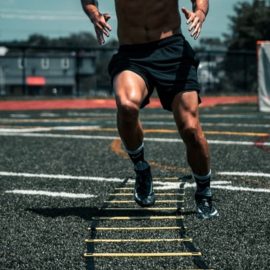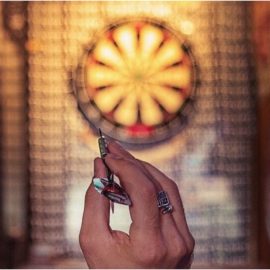
What is physical intelligence? What are the two forms of physical intelligence that shape how we interact with the world? How do these intelligences manifest in artists, athletes, and our everyday movements?
In Frames of Mind, Howard Gardner identifies spatial intelligence and bodily-kinesthetic intelligence as the two physical intelligences that help us navigate and manipulate our environment. These intelligence types control our ability to visualize objects, navigate spaces, and coordinate our physical movements.
Keep reading to discover how these intelligences develop throughout childhood, where they’re located in our brains, and why Michelangelo and Bruce Lee represent genius-level abilities in these domains.
The Physical Intelligences
What is physical intelligence, exactly? Gardner explains that this category of intelligence allows you to interact with concrete objects and the world around you. The physical intelligences Gardner identifies are spatial intelligence and bodily-kinesthetic intelligence. We’ll explain what kind of information each one of those deals with, then discuss how it matches up with Gardner’s criteria for an intelligence.
Spatial Intelligence
The first of the physical intelligences is spatial intelligence. Its core functions allow you to recognize shapes and manipulate them in your mind (for instance, when you imagine rotating a couch to figure out if it will fit through a doorway), and to navigate your surroundings.
Unlike conceptual intelligences, spatial intelligence doesn’t have a specific language or set of symbols associated with it. However, any representation of shapes and forms—from a child’s drawing to a complex blueprint or schematic—could be considered a way of recording and sharing spatial information.
Gardner points to visual artists (painters, animators, and so on) as an example of people who largely rely on spatial intelligence for their work: In order to create a work of art, the artist must first be able to picture it in detail—all of the shapes and forms the piece will consist of, and how they’re arranged in relation to each other. The artist must then be able to reproduce that mental image using whatever medium they work with.
Furthermore, people who are exceptionally skilled in the visual arts—such as the Renaissance-era sculptor Michelangelo—are often called artistic geniuses. This highlights that such people have exceptionally high levels of spatial intelligence.
Gardner says that the development of spatial intelligence follows a distinct trajectory through childhood. Initially, infants explore their environment through simple actions such as crawling, observing, and touching objects. By age three or four, children develop the ability to form accurate mental images. After that, they can learn to manipulate those images mentally, without the need to physically move or change the objects. For example, a roughly five-year-old child playing with building blocks may be able to first picture what they want to build, then accurately reproduce that image using the actual blocks.
Finally, spatial intelligence is associated with specific areas of the brain, particularly the back regions of the right hemisphere. Researchers have found that a person’s spatial reasoning can be impaired by brain damage to those areas, while their other cognitive abilities remain intact. Likewise, people in cognitive decline often retain fundamental spatial skills—such as their ability to recognize objects and move through their environment—even as they lose other faculties.
Bodily-Kinesthetic Intelligence
Next, Gardner discusses bodily-kinesthetic intelligence. The core function of this type of physical intelligence is to control your body’s movements. This includes handling objects.
While this form of intelligence doesn’t seem intellectual, it actually involves sophisticated cognitive processes and problem-solving abilities. Even the simple act of picking up a spoon requires many calculations: How far does your hand need to move to reach the spoon? How will you position your fingers to hold it? How much pressure will you apply?
As with spatial intelligence, there is no particular set of symbols associated with bodily-kinesthetic information, but Gardner says that movements themselves often take the place of such symbols. For example, someone teaching a skill or technique will often demonstrate it so that the learner can copy their movements—therefore, those motions are the method by which that bodily-kinesethic information is shared.
Almost everyone relies on bodily-kinesthetic intelligence in their daily lives, but some people have exceptional control over their bodies, and Gardner argues that such people are bodily-kinesthetic geniuses. Examples include all-star athletes such as basketball player Kobe Bryant and world-class martial artists such as Bruce Lee.
Finally, Gardner explains that, while many parts of the brain and nervous system must coordinate to make your body move, certain areas such as the frontal lobe and the cerebellum play particularly important roles in bodily-kinesthetic abilities. Damage to those areas can lead to impairments in motor skills without impairing other cognitive functions. Apraxia (the inability to make certain movements) is one example of this kind of impairment. This supports the idea that bodily-kinesthetic intelligence is a distinct form of intelligence.






